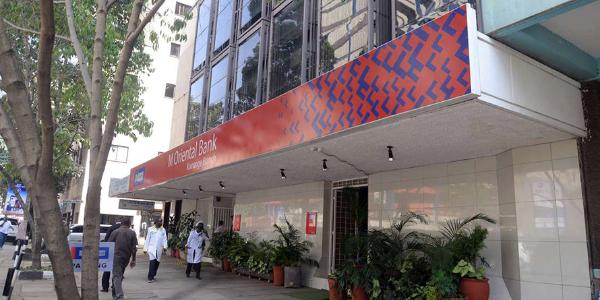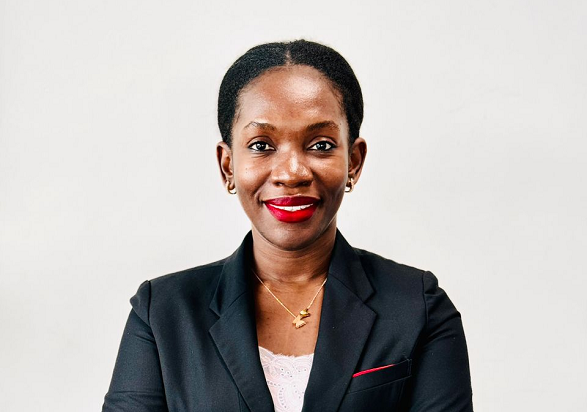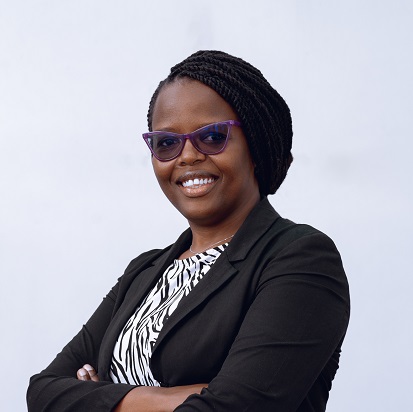Lloyd Jonathan Busuulwa, Head of Alternative Channels, dfcu Bank
Digital technologies have dramatically reshaped industry after industry. Digital transformation is now universally regarded as essential for businesses to remain viable and competitive according to a digital transformation survey done my McKinsey Global. The survey also highlights that businesses are heading unequivocally towards becoming digital from top to bottom. For those that are not transforming with urgency, the negative consequences will become compounded to the point of being untenable.
dfcu Bank started its digital transformation journey in 2017 and has registered considerable progress overtime. The Bank in its latest endeavors has launched a campaign dubbed “Banking at the speed of you” that speaks to their digital transformation agenda as a Bank.
We caught up with Lloyd Jonathan Busuulwa, Head of Alternative Channels, dfcu Bank to get insights into the bank’s digital transformation agenda in a two-part series. Below are the excerpts of part of the interview.
Digital adaptation has taken a quantum leap at both the organizational and industry levels even before the pandemic, according to McKinsey, COVID-19 has only accelerated that timeline with estimates indicating we’ve moved three to four years forward in digital adoption in a matter of months. What’s the bank’s strategy to close up the digital gap among its customers?
The bank has been on a journey to transitions into a digital bank (Bank 4.0) since 2017 when we developed the first blueprint of our digital aspiration. It started with engaging our customers to get them to understand the value of and embrace the digital platforms. Since then, we’ve been focusing on enhancing customer experience at all service points and their interaction with the products.
With innovation at the heart of the strategy, the Bank set up the Change and Innovation Unit with product development and innovation at the forefront. This unit is responsible for developing digitally inclined products and solutions for our customers. Before a product is launched onto the market, it goes through a rigorous ideation process to gain approval. This department has been key in supporting the digital agenda of the Bank.
Strategic partnerships with different stakeholders such as Telecoms, Mobile Network operators and FinTech’s geared at outreach and expanding service points are also pivotal to our strategy. You will notice that today the telcos have over 40million subscribers and 99% of those are on mobile money, that’s a wider catchment base that the bank can’t have. The total bank accounts in the market today are under 10 million from a population of over a 40million. Partnering with a telco enables the bank to offer more services to its customers that the bank can’t develop for instance through your bank application, you can buy airtime, data, bank-to-wallet transfers and vice versa and the bank also partnered with utility providers; UMEME, NWSC, Pay Tv companies etc to enable customers conveniently pay for these services thereby enhancing customer experience.
We also have partnerships with FinTechs especially in the agency banking space as a faster route to market. Additionally, there has been a huge investment in Systems and Platforms. We had to enhance our core banking platform; upgrade it from Finacle 7 to Finacle 10 to allow for agility and greater scalability needed in addressing the everchanging needs of the customers going forward. We enhanced our internet and mobile banking platforms from click banking to Quick banking with a focus on greater functionality and heightened security ultimately enhancing customer product and service experience.
In 2020, we took a very bold step in change the entire ATM fleet (70) from the normal cash dispensers which were only cash issuing to the cash recyclers. Not only was dfcu the first to market with this in Uganda but Africa. An ATM recycler works in such a way that a customer can go to the ATM, deposit money that reflects real-time in their account and then, that same money is picked by the next customer. We are starting to see a reduction in our CIT services, for replenishing our ATMs because the customer deposits can satisfy the withdrawals. We are also seeing a reduction in downtime in our ATMs especially regarding cash running out.
So closing the digital gap is really about being cognizant of the varied customer segments we have and providing digital products and solutions that meet the varied needs. At the heart of this is delivering a great customer experience at each interaction.
What impact will the bank’s digital transformation journey have on customer experiences and the bank’s growth aspiration?
The digital transformation has contributed a lot to grow the underlying business; growth in customer numbers, retention, growth of the balance sheet deposits, and the loans offered which directly impacts the profitability of the bank.
We can onboard customers online thus they no longer have to walk into the bank. Customers are now able to transact from wherever and whenever due to the increased access to the internet and mobile services which enhance their service experience.
Consumer appetite for digital banking services continues to grow, what is the current adaptation rate of digital banking services at the bank?
With our five-year digital strategy in motion, we have witnessed a positive trajectory over time. In 2017, the volume of transactions acquired over digital channels versus those in the branch was split of 70:30. 705 of the transactions executed by dfcu bank were done in-branch and 30% on the alternative channels. At that time the only channels we had were ATMs which was only dispensing, and we were just starting with mobile banking, quick banking and we didn’t have agents as at June this year the inverse was true. 30% of the bank’s total transactions being acquired at in branch (OTC) and about 70% being acquired over the channels, agency banking, ATM network, internet and mobile. However, the value is still big in-branch versus the channel; 75% of the value is transacted in-branch and the inverse on OTC. Currently, we are at 70:30 as of June 2021 going by frequency of channels used and not value. Adoption of the channels is highly dependent on the customer segment; salaried, Corporates and students – internet, mobile banking and ATM, enterprise, and SMEs – agent banking while mass-market – agent banking and mobile (USSD).
Watch-out for part Two of this interview.






